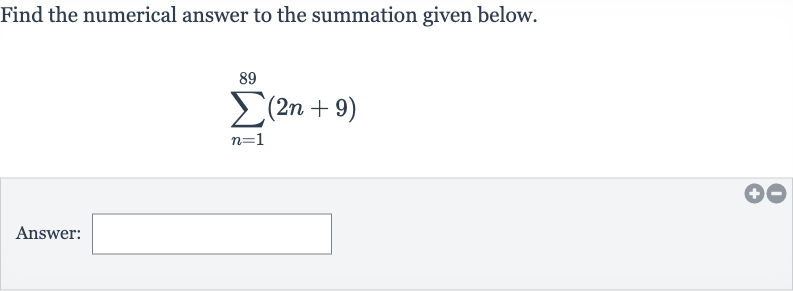Full solution
Q. Find the numerical answer to the summation given below.Answer:
- Recognize Arithmetic Series: Recognize that the series is an arithmetic series where each term can be written as , with and . The sum of an arithmetic series can be found using the formula , where is the number of terms.
- Calculate First Term: Calculate the first term of the series by substituting into the expression , which gives us .
- Calculate Last Term: Calculate the last term of the series by substituting into the expression , which gives us .
- Calculate Number of Terms: Calculate the number of terms in the series. Since the series starts at and ends at , there are terms in total.
- Use Sum Formula: Use the arithmetic series sum formula to find the sum of the series: . Substituting the values we have .
- Perform Calculations: Perform the calculations inside the parentheses first: .
- Multiply Number of Terms: Now multiply the number of terms, which is , by the sum of the first and last term, which is : .
- Find Sum of Series: Perform the multiplication to find the sum of the series: .

